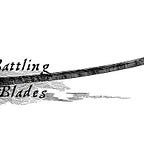The Dance of Blades: Unveiling the Distinctive Traits of Dao and Jian Swords.
Exploring the Distinct Characteristics and Martial Traditions of Dao and Jian Swords.
In the rich tapestry of Chinese martial history, two iconic swords stand out — the Dao and the Jian. Each with its unique characteristics, these weapons have played pivotal roles in shaping martial traditions and cultural heritage. In this exploration, we delve into the world of Dao and Jian swords, unraveling their distinctive traits and understanding the artistry and purpose behind each blade.
I. Dao Sword: The Broadsword of Power
Characteristics:
- Curved and Single-Edged Blade: The Dao sword, often referred to as the Chinese saber, is characterized by its distinctive curved and single-edged blade. This design emphasizes powerful slashing techniques.
- Weight Distribution: The Dao’s weight is concentrated towards the front of the blade, providing momentum for robust cutting actions. This feature makes it effective in close-quarter combat.
Historical Significance:
- Ancient Origins: The Dao has ancient roots, dating back to the Bronze Age. It evolved over centuries, becoming a staple in the Chinese military and martial arts.
- Martial Arts Embrace: Martial artists favor the Dao for its effectiveness in various combat scenarios. Its slashing movements make it well-suited for dealing with multiple adversaries.
II. Jian Sword: The Graceful Straight Sword
Characteristics:
- Straight and Double-Edged Blade: In contrast to the Dao, the Jian features a straight and double-edged blade. This design emphasizes precision in both cutting and thrusting techniques.
- Balanced Weight: The weight distribution of the Jian is balanced along the length of the blade, allowing for swift and controlled movements. This feature makes it ideal for intricate forms and techniques.
Historical Significance:
- Ancient Elegance: The Jian sword has a history steeped in elegance and tradition. It was historically associated with Chinese scholars, symbolizing refinement and intellect.
- Martial and Meditative Practices: While renowned for martial applications, the Jian also plays a role in meditative practices such as Tai Chi, where its graceful movements promote balance and fluidity.
III. The Art of Combat: Dao vs. Jian
Dao in Combat:
- Powerful Slashing Techniques: The Dao’s curved blade excels in powerful slashing techniques, making it effective in close combat and against multiple opponents.
- Versatility: Dao users leverage the weapon’s versatility for offensive and defensive maneuvers, adapting to the dynamics of the battlefield.
Jian in Combat:
- Precision and Speed: The Jian’s straight blade allows for precise cuts and thrusts, emphasizing speed and accuracy in combat.
- Controlled Movements: Martial artists wielding the Jian focus on controlled and fluid movements, utilizing the weapon’s balance for defensive tactics and quick strikes.
IV. Martial Arts Traditions: Dao and Jian in Practice
Dao in Martial Arts:
- Dao Forms: Martial arts practitioners engage in specific Dao forms, showcasing the weapon’s dynamic and sweeping techniques.
- Strength and Agility: Dao training emphasizes building strength and agility, honing the ability to deliver powerful strikes with finesse.
Jian in Martial Arts:
- Jian Forms: Martial artists practicing with the Jian engage in intricate forms that highlight the weapon’s precision and graceful movements.
- Focus on Technique: Jian's training places a significant emphasis on technique, promoting a deeper understanding of body mechanics and martial principles.
V. Cultural Symbolism: Dao and Jian in Chinese Heritage
Dao’s Cultural Significance:
- Symbol of Martial Prowess: The Dao symbolizes martial prowess and courage, reflecting the warrior spirit deeply ingrained in Chinese culture.
- Historical Epics: The Dao often features prominently in historical epics and folklore, embodying the hero’s journey and victories in battle.
Jian’s Cultural Significance:
- Representation of Wisdom: The Jian represents wisdom and scholarly pursuits, aligning with the image of the Chinese scholar-official who valued intellect over brute force.
- Symbol of Harmony: Beyond combat, the Jian symbolizes harmony and balance, playing a role in the philosophical and artistic traditions of China.
VI. Conclusion:
Harmony in Diversity The Dao and Jian, each with its unique characteristics and cultural symbolism, represent the yin and yang of Chinese martial heritage. While the Dao embodies power, strength, and the warrior’s spirit, the Jian symbolizes elegance, wisdom, and the balance between mind and body. In the dance of blades, both swords contribute to the rich tapestry of Chinese martial arts, each telling a story of skill, tradition, and the diverse facets of combat philosophy.
